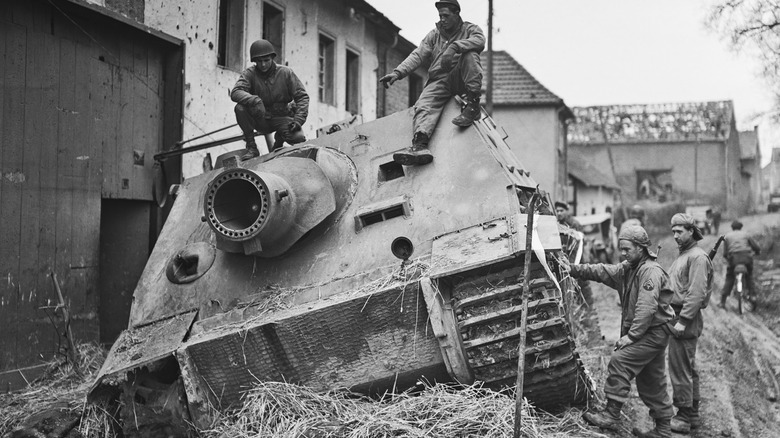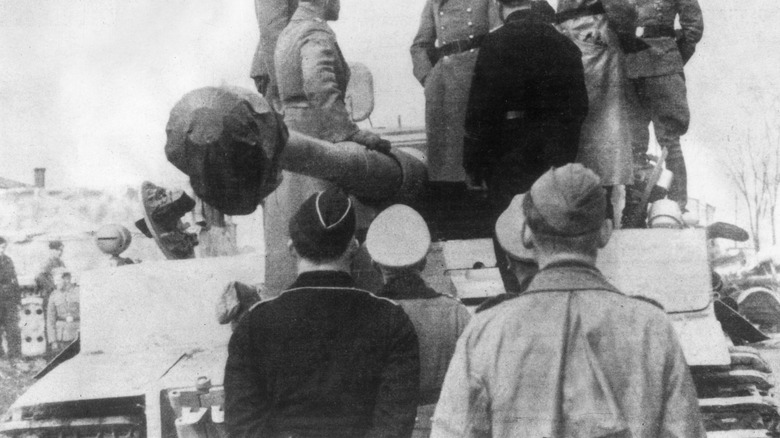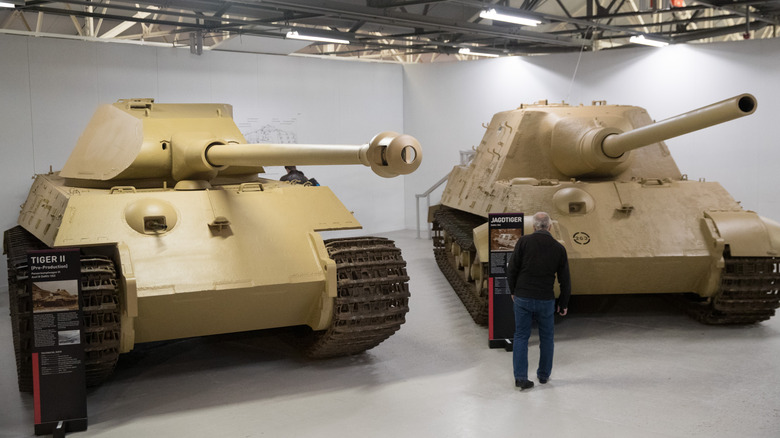The Story Of Tiger 231: The WWII Tank That Just Wouldn't Die
Tiger 231 was an impenetrable war machine from World War II that stood on the battlefield with multiple system failures and managed to retreat 37 miles on its own power. The story is as much about the tank as it is about the crew that didn't leave the wounded Tiger in what is often referred to as the largest tank battle in history, the Battle of Kursk.
After facing a defeat at Stalingrad (now called Volgograd), a battle that lasted from August 23, 1942, to February 2, 1943, the German army decided to focus on the eastern front and capture Kursk. This 150 by 100-mile region, occupied by the Soviet Army, bulged westward into the German lines, giving the Germans a strategic upper hand.
To envelop the frontline Red Army troops deployed in the bulge by surrounding them from the north and the south, Germany deployed the unified armed forces with the 503rd Heavy Tank Battalion and its 43 Tiger tanks, along with other forces, as part of Operation Citadel. This troop had some of the most advanced tanks of the time, including the legendary Tiger 231, the World War II tank that wouldn't die.
Tiger tanks led the charge at Battle of Kursk
Before we move ahead with Tiger 231's story, it's important to look at some background info about the Tiger tanks. Tiger tanks were known in German as the Panzerkampfwagen VI Tiger Ausf. E. They had 100mm thick armor at the front, an 88mm anti-tank gun (1,000-meter range), and a powerful engine. 1,837 Tiger tanks were built, and the first ones served against Russia's Red Army in 1942.
In 1943, the German forces marched along a collective farm near Rostov-on-Don, unaware that the Soviets had gained intelligence of the operation and heavily fortified the region with over a million soldiers. The Tiger tanks, which led the charge for the Germans, drew a lot of attention from the defenders, who focused their fire on the heavy war machines.
Tiger No. 231, under Lieutenant Zabel, took hundreds of hits from the Soviet fleet. First, the tank took a blow on the front from a 76.2mm anti-tank shell. It blew the spare track link underneath the driver. Then, it faced a 45mm anti-tank shell that destroyed the observation cupola, and subsequent hits damaged the armored glass, the loader's hatch, and the main gun.
Tiger 231 survived 252 hits
Although the defending troops landed many shots, damaging almost all tank systems, including the engine, suspension, and radio, the Tiger 231 stood on the battlefield for six hours. The focus on Zabel's platoon relieved the lighter units that were following, but eventually, the Soviet army took control of the region, and the Germans lost the Battle of Kursk.
With severe structural damage and multiple mechanical faults, the Tiger 231 managed to retreat almost 37 miles on its power with its crew, making it the tank that wouldn't die. When Zabel and his crew inspected the tank, they discovered that the defenders hit it with 222 rounds of anti-tank rifle ammo, 14 rounds from a 57mm anti-tank gun, and 11 76.2mm shells.
Even though the tank didn't have any functional weapons or defensive systems, one could say that the Soviet army rendered it useless. However, its return made the Tiger 231 one of the most famous tanks ever: It was sent back to Germany, where its turret was repaired and used for training at the Tiger Tank Gunnery School in Putlos, Germany.


